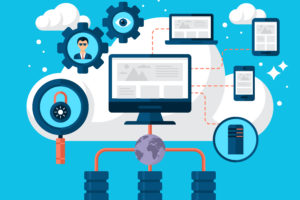The rise of ecommerce has permanently changed how warehousing works. With additional orders streaming in from the internet, it can be challenging for warehouses to cope with the shifting logistics landscape.
While it takes time, effort, and expenditure to create a warehouse that’s suited for both traditional fulfillment and ecommerce, harnessing ecommerce can increase your profits. According to the US Census, in the third quarter of 2019, ecommerce sales accounted for 11.2% of all total sales.
Still, ecommerce presents different challenges than traditional commerce. Instead of large, voluminous shipments that can be easily picked, ecommerce is comprised of a large volume of small orders. Picking, fulfilling, and transporting these small orders, without losing profit to the cost of delivery, can be challenging.
Ecommerce customers can also be less loyal than traditional B2B customers — delayed shipments and lack of delivery information can cause them to switch brands.
Here’s how CapGemini, a warehouse consulting company, suggests you handle your ecommerce and warehousing issues.
Invest in a WMS / ERP.
Investing in a good WMS or ERP can make a huge difference in how your warehouse performs. A good WMS or ERP will allow you to seamlessly track inventory, orders, and fulfillment. In fact, according to CapGemini’s report, “large retailers rely on inventory accuracy to keep margins down and to exceed customer expectations.” Automating your inventory-tracking capabilities helps your warehouse run more leanly, saving you money.
However, automating inventory tracking isn’t the only way a good WMS or ERP helps. Depending on your needs, your WMS or ERP retailer may be able to help you integrate both B2B and B2C fulfillment, while keeping track of the needs of both. Since the two different sectors have different challenges, having both of them available at a glance via software can help you make intelligent decisions about running your warehouse.
Invest in automation.
Automation can make the difference between a warehouse that struggles with fulfillment, and one that thrives. Consider investing in automated sorting machines to help fulfill orders. CapGemini also suggests that having an automated box-folding machine for shipment packages can cut down on time and help meet ecommerce customer expectations. Cobots can also ease the burden of high loads on your warehouse.
Keep B2B and B2C separate.
Struggling to fulfill orders correctly? It may benefit your warehouse to have a separate B2B and B2C space. That’s because B2C ecommerce fulfillment often involves returns. Returns are the bane of every warehouse, as it’s expensive to receive returned items, manually process them, then determine whether or not to repackage them and resell them.
While integration may be your eventual goal, there’s nothing wrong with having separate systems to support B2B and B2C, so long as your warehouse can support the cost.
Need help with your ecommerce work-flow? Vodigy makes it easy! We help small and medium-sized businesses make the right decisions with custom software and the latest technology. Give us a call today!




